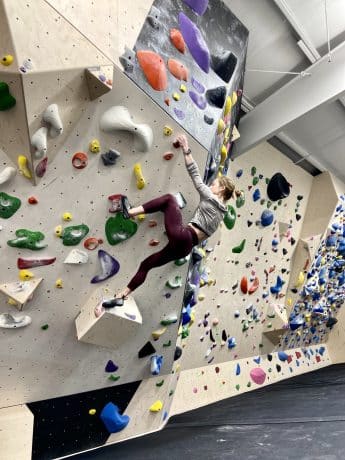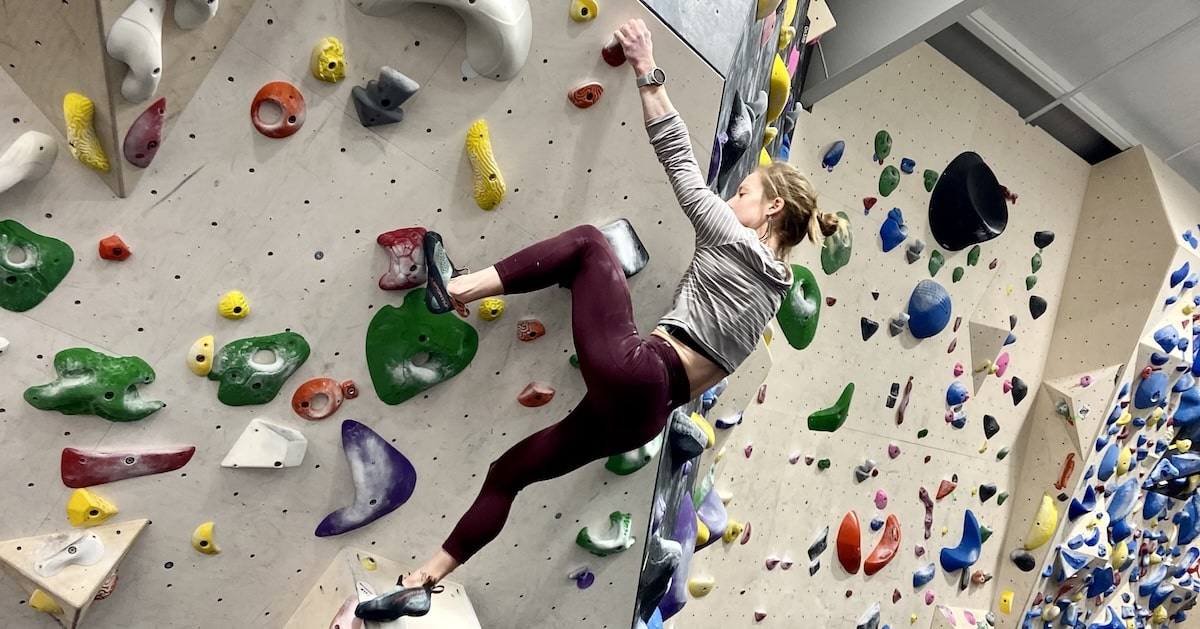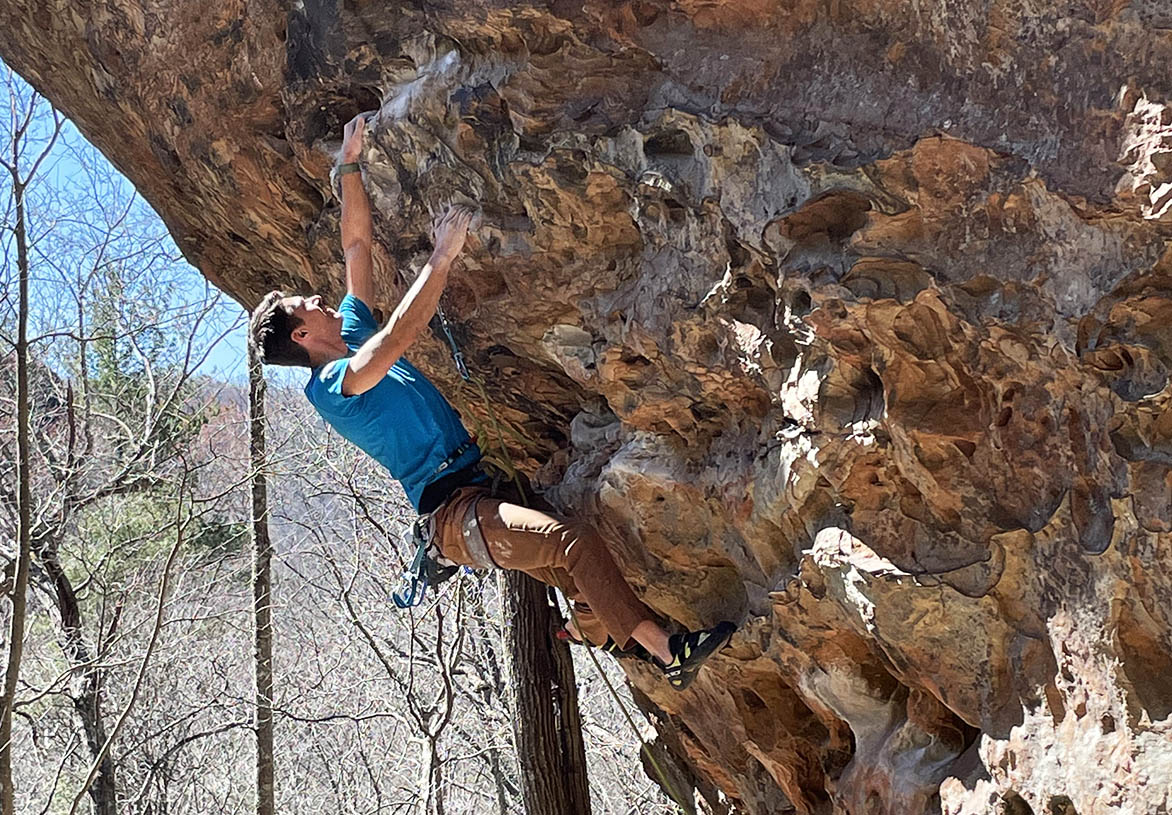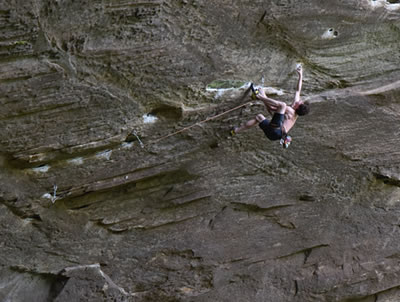Increase your strength and power this training season by including limit bouldering in your climbing training plan. Here’s how to best work at your max.
No climbing training plan is complete without a component of limit bouldering. And before you ask, yes: that does still apply to purely sport climbers. All the endurance in the world won’t help you send if you lack enough strength and power to navigate the crux. Limit bouldering fills both of those buckets.
More than any other workout routine (hangboarding included), limit bouldering leads to the greatest gains in functional strength and power on the wall. Expect to see physical improvements in force generation and effective energy management, but also mental growth when it comes to building the confidence to “go for it” despite preconceived judgments about a particular move. Limit bouldering teaches climbers how to separate effort from outcome. You’ll learn the value of trying hard for trying’s sake. And often enough, deciding to try in the first place is all it takes to unlock the move.
But limit bouldering isn’t the most intuitive exercise. It’s a simple yet easily misunderstood workout that only imparts these benefits when done correctly. Hitting the intended energy system takes patience and practice. That starts with understanding how to engage in limit bouldering and where it fits into your training routine for the best results.

Limit bouldering involves working 3-5 moves at your absolute max. Anything less or more defeats the purpose.
Projecting Versus Limit Bouldering
Most climbers understand the concept of projecting a climb. In short, we can define projecting as the process of working through a climb that’s too difficult or complex for you to send immediately. A project may take a few tries, a few sessions, a few months, or even a few years of concerted effort to accomplish. No matter the time frame, though, the goal remains the same: send your project. Everything you do on the climb happens in the name of this ultimate goal. Deciphering the moves leads into linking sections which leads into highpointing or lowpointing which leads into redpoint burns and eventually to the send.
Not so with limit bouldering. Sending isn’t the goal here. In fact, fixating on sending actually undermines the whole point of limit bouldering. This then begs the obvious question: if you’re not trying to send, what is the point?
The answer: trying hard in short, intense bursts. Those bursts consist of no more than three to five moves at your absolute limit. Sending doesn’t fit into this equation for a few reasons. First, most boulder problems—though significantly shorter than routes—still take more than three to five moves to complete. Anything more than that quickly switches modes from pure strength and power training into power endurance. Second, sending something means that it’s within your ability. Limit bouldering requires pushing past that point. You want to be climbing on things that won’t go down anytime soon, or at least not without the fight of your life.
There’s a time and place for projecting, but limit bouldering ain’t it. Take the pressure off of sending and focus on trying hard. Consistent high-intensity effort on climbs above your redpoint grade will pay off with plenty of sending later on.
How to Limit Boulder
Start with a thorough warmup and escalate through the grades. Then select boulders beyond your max. Take your redpoint grade, and even your projecting grade, and crank up the dial one to two grades higher. If you get to the point where not even a single move feels remotely doable, you’ve gone too far. We’re looking for the sweet spot between impossible and improbable.
Break that climb down into three to five move sections that demand every ounce of juice you have in the tank. Aim to employ all of the technical skills in your repertoire as well as max physical output. The combination should feel utterly exhausting.
Work on piecing together each short-and-sweet sequence. You can think of each one as a mini-project of its own. Try and “send” the sequence instead of the climb. Spray walls and LED boards like the Tension, Moon, or Kilter also work wonderfully for this purpose since they’re already shorter than typical bouldering gym walls. Climbers can also use them to create their own sequences at the right degree of difficulty if nothing else fits the bill just right.
Rest enough during your session such that you can give it the beans each go. Fatigue has no place in limit bouldering. “Powering down” means crossing back into power-endurance territory. Stave off the fatigue by taking a few minutes between attempts. All throughout, keep close tabs on your output. As soon as it starts to noticeably dip, call it. Sometimes that’s the hardest part. But this isn’t a contest of who can last the longest. It’s just about the try-hard.
How Often to Limit Boulder
Enough rest from session to session matters just as much as enough rest during your session. Absolutely no limit bouldering two days in a row, and ideally no more than twice a week. Space out those sessions with “quick send” sessions that focus on volume more than intensity, cross-training sessions, and full rest days.
For climbers accustomed to chasing the pump, limit bouldering might not feel like the productive session that you’re used to. You might not walk away exhausted every time. You might not even get pumped at all. Don’t confuse that with selling yourself short. Each short sequence should feel like the hardest thing you’ve ever tried, every time. That’s only possible when fresh. Do what it takes to show up rested and ready to dig that deep!
Related Articles:
- Transitioning from Cragging Season to Training Season
- Get Lit: An Introduction to Interactive Climbing Boards
- Send Your Project Faster with Beta Visualization
- Projecting 101: 6 Tips for Sending Your Project
- Level-Up Your Warm-Up Climbs
Copyright © 2000–2025 Lucie Hanes & Eric J. Hörst | All Rights Reserved.











